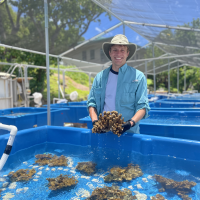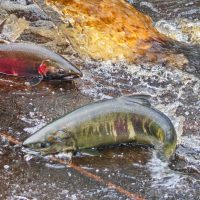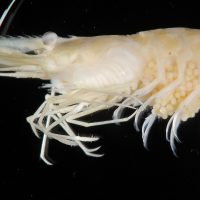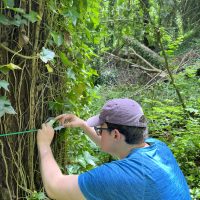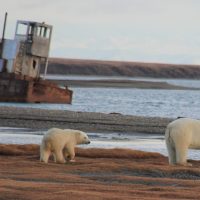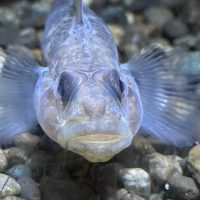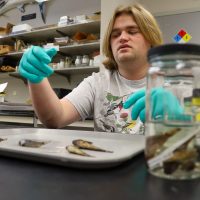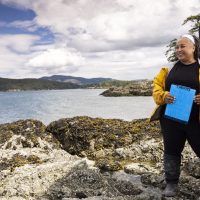Filter Results
Corals, contaminants, and climate change
Bleaching. This complicated and foreboding term now lurks around every conversation about coral reefs. Impacted heavily by climate change and associated warming oceans, coral reefs experience bleaching when the algae that live in their tissues and contribute vitally to their growth are expelled, causing the corals to lose their color, and possibly their lives. Callum Backstrom, SAFS PhD student and one of UW’s 2025 Husky 100, is studying the resilience of certain corals to bleaching.
Read moreBringing to life the story of Pacific salmon and their recovery challenges
In a StoryMap bringing to life the challenges faced by Pacific salmon, SAFS graduate student, Amirah Casey, dives into the role of urban stormwater runoff and climate change in hindering salmon recovery.
Read moreTracking two invasions for the cost of one
While conducting early detection monitoring for invasive European green crab (Carcinus maenas), Washington Sea Grant Crab Team discovered a non-native shrimp Palaemon macrodactylus, hitherto unreported along Washington’s portion of the Salish Sea. By examining prior data, and tracking this species closely over subsequent years, the team which included researchers from SAFS, were able to consistently monitor the spread and increase of this species across the region.
Read moreBirdsong, insects, and streams: How are King County’s riparian habitats faring?
It’s not just fish being studied at SAFS. Undergraduates get to learn about a huge range of species, from teeny tiny parasites and insects, to seabirds and the largest mammals on Earth. And it’s not just animals either. It’s all the habitats in which these animals live and depend on. For Stevan Pekich, his capstone project is exploring how urbanization and insect health are affecting riparian-obligate bird species in our local King County.
Read moreScientists pilot a new method to measure the health of wild polar bears
Climate change threatens the health of polar bears across the Arctic. A study published in Conservation Physiology on March 5, introduces a new approach to measuring the health of polar bear populations, drawing inspiration from a well-known concept in human medicine: allostatic load. The lead author of the study is SAFS PhD student, Sarah Teman, working with UW Professor, Kristin Laidre, and scientists from USGS and Fish and Wildlife Health Consulting.
Read moreWhy study at SAFS? Because you absolutely love fish!
What inspires our undergraduates to pursue a degree all about aquatic and fishery science? We caught up with Eli Nettlebeck—a junior at SAFS, a transfer student from Seattle Central College, and someone who loves fish—to find out why.
Read moreWho’s who? Using identification tools to tell freshwater sculpin apart
Scanning through the rows and rows of preserved fish housed in the UW Fish Collection, it’s easy to get lost trying to figure out what each fish is, especially to the untrained eye. Fish identification is a necessary step when preserving specimens from the wild, which deliver key insights for researchers delving into the untold secrets of fish. For SAFS undergraduate Liam Aston, his capstone research involves looking at Cottus specimens in the Fish Collection, a group of freshwater sculpin found throughout the Northern Hemisphere.
Read moreStorymap: Pacific Salmon and Steelhead at a Crossroads
Celebrating Women in Science
10 years ago, the UN declared 11 February as the International Day of Women and Girls in Science. On this 10th anniversary at the University of Washington, we’re celebrating our women in aquatic and marine science: women who are leaders in their fields, women who are aspiring to be the next generation of fisheries scientists and marine biologists, women who are uplifting and supporting other women in science.
Read moreEmbracing community, mentorship and interdisciplinary science during Black History Month
Interdisciplinary. Providing mentorship. Community-focused. These are just some of the terms that come to mind for Chris when she describes what it means to be a Black scientist. “When we think about being a non-majority community in STEM – and in this instance Black in STEM – we are tasked with a three-pronged responsibility because this is a lived experience for so many of us: being inherently interdisciplinary, mentor others, focus on your community”. Chris Mantegna is currently a graduate student at SAFS, after earning her bachelor’s degree in UW Marine Biology in 2021.
Read more